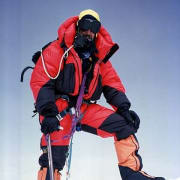The Birthplace and Soul of Big Wall Climbing - Yosemite National Park

Yosemite National Park
Yosemite National Park, widely regarded as the birthplace of modern rock climbing has attracted generations of climbers seeking to scale iconic El Capitan and its famous routes. The history of climbing in Yosemite spans decades, with each era marked by significant achievements, evolving ethics, and advancements in climbing techniques.
Climbing in Yosemite began modestly in the early 20th century but gained serious traction in the 1950s and 1960s, becoming the epicenter of big wall rock climbing. The history of climbing in Yosemite blends a rich legacy of climbing with a perpetual spirit of innovation.
This Golden Age saw the emergence of visionary climbers including Warren Harding, Royal Robbins, Chuck Pratt, and Yvon Chouinard, who tackled the formidable granite faces of Yosemite's iconic formations.
In 1958, Warren Harding, along with Wayne Merry and George Whitmore, completed the first ascent of El Capitan via The Nose route, an audacious feat that took 47 days and established Yosemite as the place-to-be for climbers.
The 1970s brought ‘Clean Climbing’ championed by icons Robbins and Chouinard. They encouraged climbers to minimize their impact on the rock. This era introduced the use of removable protection, like nuts and cams, rather than pitons that scarred the rock. Clean climbing became a guiding principle, influencing both the climbing community and the development of modern equipment.
The 1980s and 1990s were marked by the rise of free-climbing, where climbers used ropes only for protection, not for upward movement. In 1993, Lynn Hill redefined the possibilities of Yosemite climbing by becoming the first person to free-climb The Nose on El Capitan, famously stating, "It goes, boys." Hill’s groundbreaking accomplishment inspired a new generation of climbers and set a high standard for difficulty and exploration in the park.
In the 21st century, climbers pushed the boundaries of free-climbing on El Capitan. Tommy Caldwell and Kevin Jorgeson’s 2015 ascent of the Dawn Wall, widely considered one of the hardest big-wall free climbs in the world, took 19 days and captivated the climbing community. In 2017, Alex Honnold’s ropeless ascent of Freerider brought global attention to Yosemite climbing, showcasing his unmatched extreme skill.
El Capitan – Iconic Routes
El Capitan, one of the most iconic rock formations in the world and renowned for its towering granite face and challenging routes, attracts climbers from around the world every year. Standing over 3,000 feet, the vast granite walls offer a variety of climbing experiences ranging from traditional aid-climbing to free-climbing. Among its numerous routes, several stand out for their difficulty, history, and the climbers and characters who conquered them.
The Nose is a beast, and arguably the most famous route on El Capitan, first ascended in 1958 by Warren Harding, Wayne Merry, and George Whitmore. The ascent took the adventurers 47 days over 18 months, marking an awesome achievement in climbing history. The Nose stands as an iconic benchmark for big-wall climbing, famously free-climbed by Lynn Hill in 1993, making her the first person to free-climb the daunting route in a single day. The highly technical route includes famous sections named the Great Roof and the Changing Corners.
Freerider, first climbed in 1998 by brothers Thomas and Alexander Huber, presents another epic route on El Capitan. Freerider, essentially a variation of The Salathé Wall, offers more free-climbing potential and gained legendary status when Alex Honnold famously free-soloed the daunting route in 2017. The ascent was beautifully documented in Jimmy Chin’s Oscar-winning film Free Solo. (Related Article on Free Solo) This route involves complex sections including the Boulder Problem and the Enduro Corner. The Salathé Wall, another legendary route established in 1961 by Royal Robbins, Chuck Pratt, and Tom Frost, combines classic aid and free climbing on sections including the Headwall and the Heart Ledges.
The Dawn Wall, first climbed by Tommy Caldwell and Kevin Jorgeson in 2015 and widely regarded as one of the hardest big-wall free climbs in the world, fascinates. The climb took the pair 19 days of near-continuous effort, ascending pitches with extremely challenging moves on thin cracks and tiny holds. This historic ascent showcased Caldwell and Jorgeson’s supreme skills and brought further attention to rock climbing and El Capitan.
The Heart, positioned on the southwest face of El Capitan, appears as a heart-shaped formation visible from the valley floor. The technically-demanding and exposed route, first climbed in 1970 by legendary climbers Chuck Pratt, Yvon Chouinard, and Chris Jones, helped to establish El Capitan’s rugged and attractive big-wall reputation.
